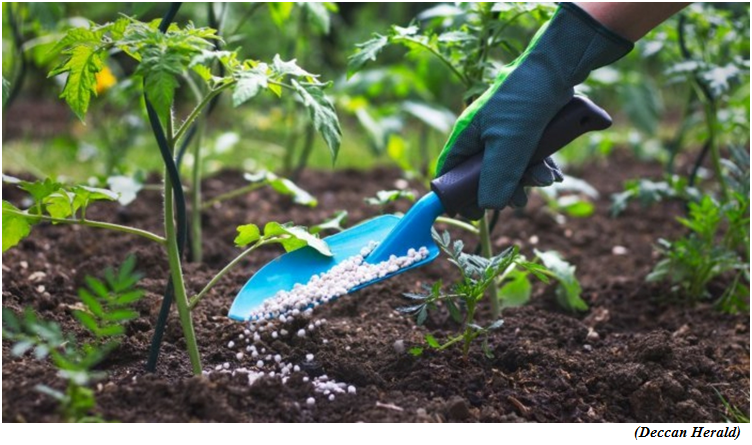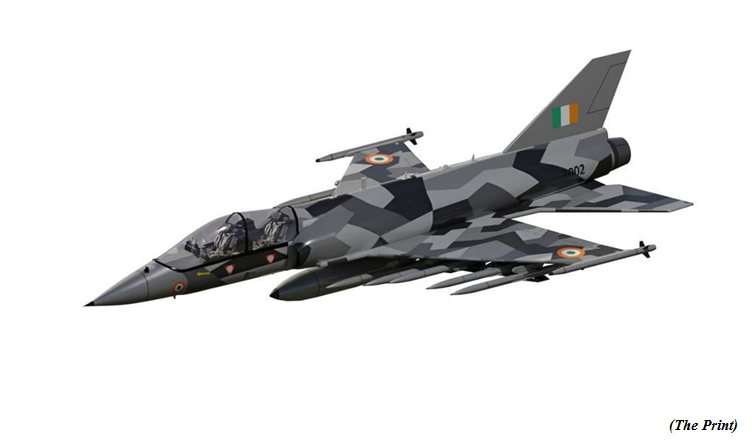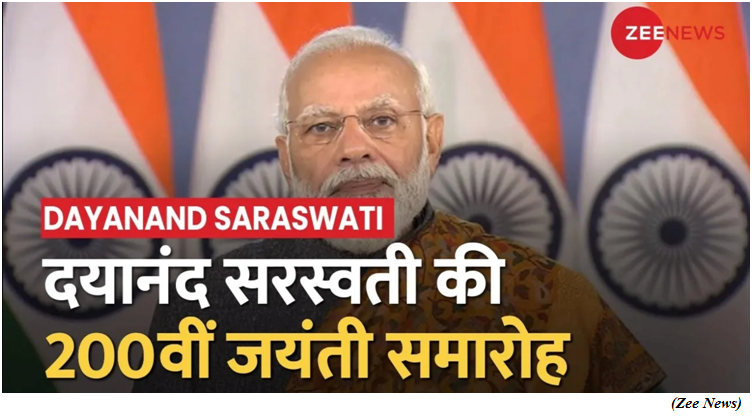Emissions from manure synthetic fertilisers could be cut by 80% Study (GS Paper 3, Environment)

Why in news?
- Emissions from manure and synthetic fertilisers could be reduced by as much as 80 per cent, to one-fifth of current levels, according to a new study.
- Researchers have quantified that two thirds of emissions from fertilisers take place after they are spread on fields, with one third of emissions coming from production processes.
Details:
- The researchers, from University of Cambridge, UK, have calculated the carbon footprint for the full life cycle of fertilisers.
- Fertilisers are responsible for approximately five percent of total greenhouse gas emissions, the first time this has been accurately quantified, and found that carbon emissions could be reduced to one-fifth of current levels by 2050.
- Although nitrogen-based fertilisers are already known to be a major source of greenhouse gas emissions, this is the first time that their overall contribution, from production to deployment, has been fully quantified.
Key Highlights:
- Their analysis found that manure and synthetic fertilisers emit the equivalent of 2.6 gigatonnes of carbon per year - more than global aviation and shipping combined.
- Carbon emissions from fertilisers urgently need to be reduced; however, this must be balanced against the need for global food security.
- According to the study, earlier research has estimated that 48 per cent of the global population are fed with crops grown with synthetic fertilisers, and the world's population is expected to grow by 20 per cent until 2050.
Recommendations:
- The Cambridge researchers said that a combination of scalable technological and policy solutions are needed to reduce fertiliser emissions while maintaining food security.
- However, they estimate that if such solutions could be implemented at scale, the emissions from manure and synthetic fertilisers could be reduced by as much as 80 per cent, to one-fifth of current levels, without a loss of productivity.
Mitigation:
- Emissions from the production of synthetic fertilisers are mostly from ammonia synthesis, partly due to chemical reactions used in the production process.
- The most effective mitigation at the production stage would be for the industry to decarbonise heating and hydrogen production.
- Fertilisers could also be mixed with chemicals called nitrification inhibitors, which prevent bacteria from forming nitrous oxide.However, these chemicals are likely to make fertilisers more expensive.
HAL unveils design for new supersonic trainer, can aid IAF in modern combat training
(GS Paper 3, Defence)
Why in news?
- Recently, the Hindustan Aeronautics Limited (HAL) has unveiled the design of a new supersonic jet trainer that could play a critical role in modern combat aircraft training of the Indian Air Force (IAF).
- It said there would be a scale model of the HLFT-42, the ‘Next Gen Supersonic Trainer’.

HLFT-42:
- HAL plans to equip the new trainer aircraft with modern avionics like Active Electronically Scanned Array (AESA), Electronic Warfare (EW) Suite, Infrared Search and Track (IRST) with Fly by Wire (FBW) control system.
- This is a single engine trainer that has been in the works for a long time and underwent numerous design changes.
- The design of HLFT-42 is inspired from the Tejas Light Combat Aircraft programme.
- This aircraft could plug the gap between subsonic jet training which takes place on an actual fighter like the MiG-21.
New aircraft to replace Swiss-made Pilatus:
- In 2017, HAL and BAE Systems, which developed the Hawks, came together with a product called the Advanced Hawk.
- The BAE Systems had then said that new features on the Hawks would reduce training demands on more expensive frontline aircraft, creating additional capacity for operational tasks, and make training more cost-effective as well as structured.
- However, the IAF did not pursue this aircraft after it was found that the Advanced Hawk was not a supersonic jet.
Way Forward:
- The IAF had in October 2022 inked a Rs 6,800 crore deal with HAL for the purchase of 70 Hindustan Turbo Trainer (HTT)-40 trainer aircraft, a move that will reduce pressure on the force that is dealing with limited number of planes.
- The HTT-40 will be part of the first stage of training for the IAF pilots – basic training – and will eventually replace the Swiss-made Pilatus aircraft bought in 2012.
PM inaugurates 200th Jayanti celebrations of Maharishi Dayanand Saraswati
(GS Paper 1, Modern India)
Why in news?
- Recently, the Prime Minister inaugurated the year-long celebrations commemorating the 200th birth anniversary of Maharishi Dayanand Saraswati, at Indira Gandhi Indoor Stadium in Delhi.
- He also released a logo for commemoration.

Key Highlights:
- He handed over the LED Mashal to youth representatives as a symbolic carry forward of the spark ignited in this programme reinforcing the messages of Maharshi Dayanand Saraswati to the rest of India and the world.
- He underlined that the auspicious occasion will be celebrated for two years.
Background:
- Born on 12th February 1824, Maharishi Dayanand Saraswati was a social reformer who founded Arya Samaj in 1875 to counter social inequities prevalent during the times.
- Arya Samaj has played a crucial role in the cultural and social awakening of the country through its emphasis on social reforms and education.
- His main message was for Hindus to go back to the roots of their religion, which are the Vedas. By doing this, he felt that Hindus would be able to improve the depressive religious, social, political, and economic conditions prevailing in the country in his times.
Politics:
- For instance, he was the first to give the call for 'Swarajya' as 'India for Indians' in 1876, later taken up by Lokmanya Tilak.
- One of his most influential works is the book Satyarth Prakash, which contributed to the Indian independence movement. His followers included Sri Aurobindo and S. Radhakrishnan.




